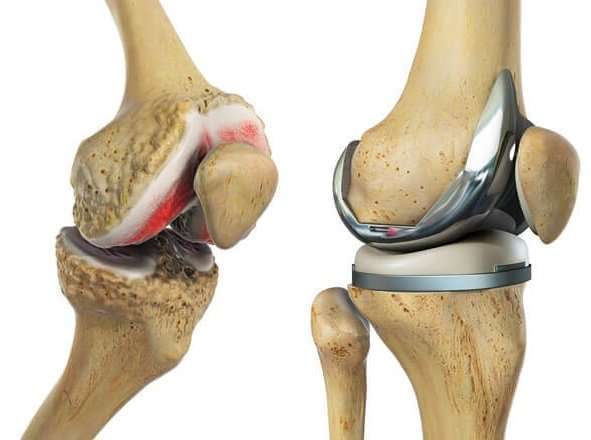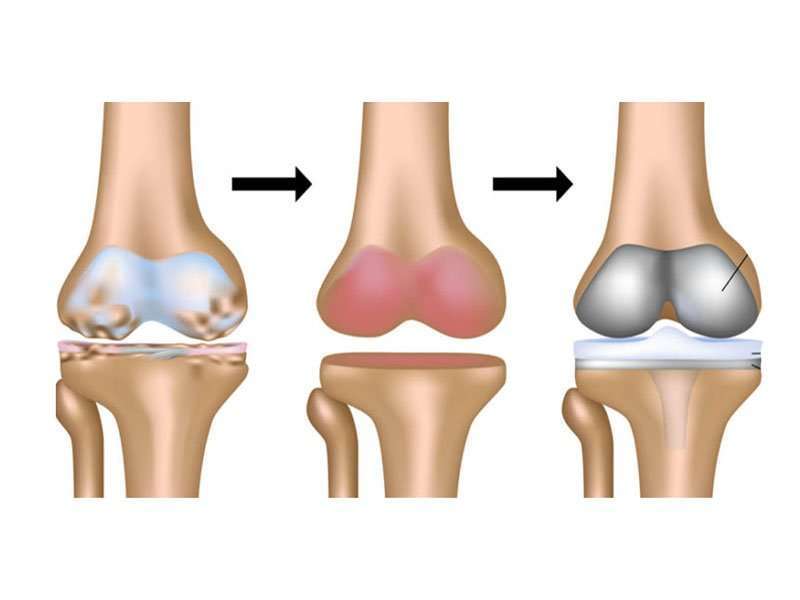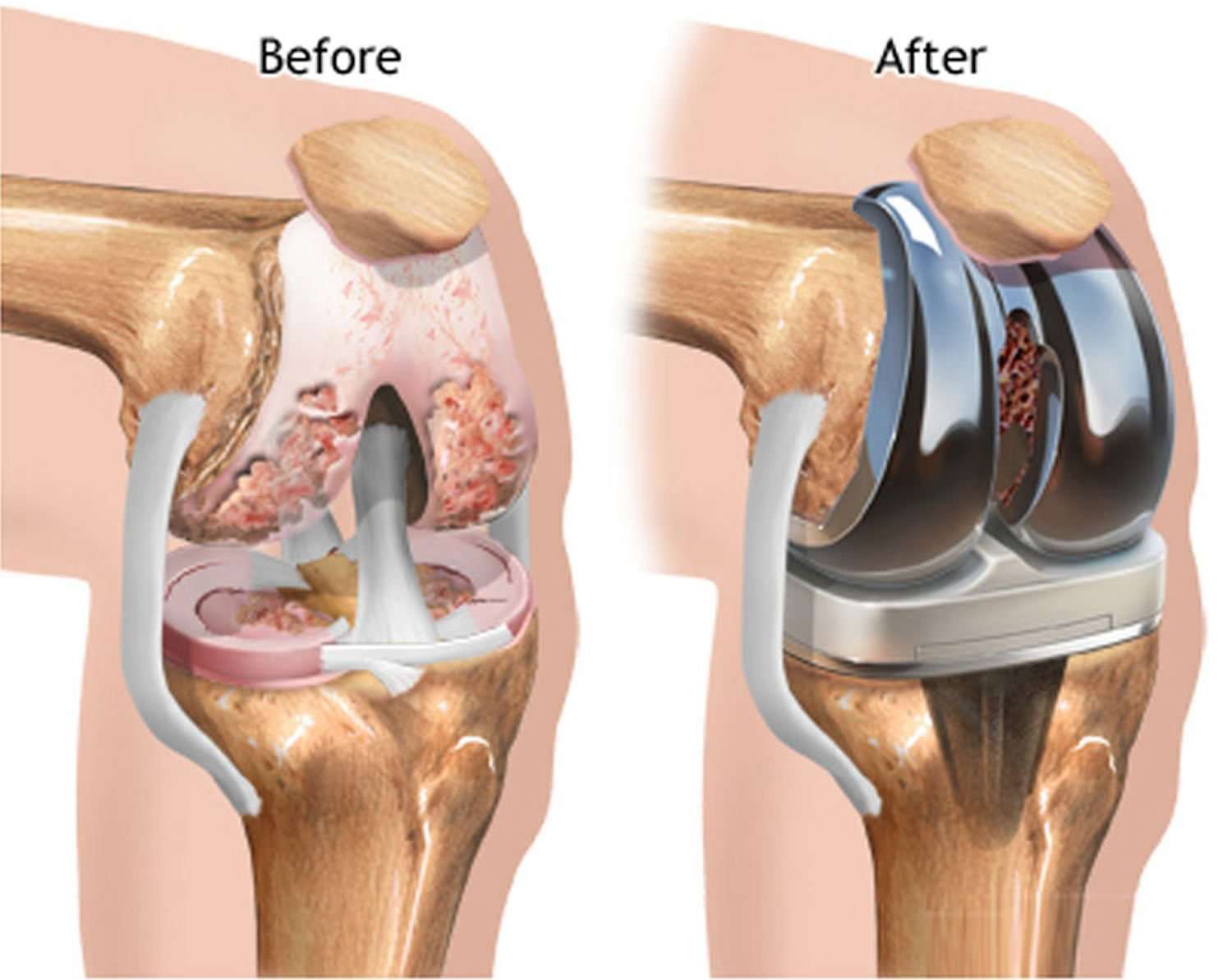Where Will I Feel Knee Replacement Pain
As mentioned above, knee replacement pain can come in many different forms depending on the cause. Knee pain is to be expected due to the surgical procedure itself, with swelling, bruising, and the introduction of prosthetic parts.
Beyond that, it is possible to feel pain in parts of the body other than your knee. This is known as referred pain.
Your hips, lower back, groin area, and calves may initially hurt due to the change in your stance and the way you walk. Of course, it is also typical to feel sore due to extended amounts of time in bed during your recovery.
Think That Walking And Moving Around Is The Major Achievement
Patients mistakenly think that walking is a major achievement after surgery and that walking without a walker is even better. Other healthcare professionals can misguidedly feed into that misconception making the problem even worse. The truth is that getting up and moving around after surgery is encouraged but for the first two weeks you should be protecting the joint from full weight bearing forces by using the walker. This allows you to carry a percentage of your body weight through your arms instead of on your surgical knee.
During your knee replacement surgery, the ends of your long bones have been cut and a prothesis placed over the top. Bone that has been cut can be very painful, just ask someone who has had a small piece of bone taken from their iliac crest for use in a back surgery. That bone removal site can ache for months.
If you walk around without any protection for your new knee you will likely inflame and aggravate the bones. This can cause a person to have a real problem controlling their pain. All things considered you dont want to be dealing with more pain than is already associated with the post surgical period. So use your walker.this means actually putting weight through your arms. A 4 wheeled walker is a horrible choice for this. Get the regular 2 wheeled walker and slow down a bit. Your knee will thank you and your recovery will go much faster.
Naively Trusting Your Recovery To Rehab Professionals
This is the toughest one for people to understand. The medical model is focused on you being treated by rehabilitation professionals on an intermittent basis.
This frequency is by necessity low because it is costly. At most you will be seen twice a day in a rehab facility, daily to start with in home care and then usually 2-3 times per week for further home care and then in outpatient therapy.
The problem is that you will have the most success and get well the quickest if you perform your knee replacement recovery exercises 4x a day. What you really need to get into your head is that you are responsible for your success and refuse to adopt the traditional knee replacement rehab timetable which will ultimately slow down your progress.
Read Also: Best Knee Walker 2016
How Long Does It Take To Recover From A Total Knee Replacement A Surgeons Timeline
Published on: 19th December 2018
A few weeks ago, Channel 5 aired a documentary called Operation Live: Total Knee Replacement. Did you catch it?
It caused quite a stir, mainly due to its no-holds-barred content. As the title implies, the programme featured live coverage of a patient undergoing a total knee replacement at the Royal London Hospital. You can see it on catch-up here , though do exercise viewing caution, for obvious reasons.
For anyone who works with Total Knee Replacements or is considering one, Operation Live was a fascinating watch. It wasnt for the squeamish. But that was the key take-home point: for all its great benefits, TKR does take significant recovery time. More than many patients realise.
So what does that look like in practice? Keep in mind that recovery times vary from person to person, but here is a general guide.
Pain After Knee Replacement: Six Months

If you are still experiencing pain six months after surgery, you may be wondering how long it will be until you feel normal again. Unfortunately, there is no easy answer.
In some cases, it may take up to a year for all of your swelling to completely go away. Your knee will continue to recover for years to come, as scar tissue forms and your muscles become stronger with continued physical therapy and light exercise.
As previously mentioned, if you are still experiencing debilitating levels of pain at this stage, you could be suffering from chronic pain. While you may be tempted to tough it out, its important to talk with your doctor. Together, you can find what is causing your persistent pain and come up with a plan to fix it.
Read Also: Nano Knee Surgery Cost
Preparation For Total Knee Replacement Surgery
Patients undergoing total knee replacement surgery usually will undergo a pre-operative surgical risk assessment. When necessary, further evaluation will be performed by an internal medicine physician who specializes in pre-operative evaluation and risk-factor modification. Some patients will also be evaluated by an anesthesiologist in advance of the surgery.
Routine blood tests are performed on all pre-operative patients. Chest X-rays and electrocardiograms are obtained in patients who meet certain age and health criteria as well.
Surgeons will often spend time with the patient in advance of the surgery, making certain that all the patient’s questions and concerns, as well as those of the family, are answered.
Costs
The surgeon’s office should provide a reasonable estimate of:
- the surgeon’s fee
- the degree to which these should be covered by the patient’s insurance.
Total Knee Replacement Surgical Team
The total knee requires an experienced orthopedic surgeon and the resources of a large medical center. Some patients have complex medical needs and around surgery often require immediate access to multiple medical and surgical specialties and in-house medical, physical therapy, and social support services.
Finding an experienced surgeon to perform your total knee replacement
Some questions to consider asking your knee surgeon:
- Are you board certified in orthopedic surgery?
- Have you done a fellowship in joint replacement surgery?
- How many knee replacements do you do each year?
How Long Will It Be Before I Feel Normal
You should be able to stop using your crutches or walking frame and resume normal leisure activities 6 weeks after surgery. However, it may take up to 3 months for pain and swelling to settle down. It can take up to a year for any leg swelling to disappear.
Your new knee will continue to recover for up to 2 years after your operation. During this time, scar tissue will heal and muscles can be restored by exercise.
Even after you have recovered, it’s best to avoid extreme movements or sports where there’s a risk of falling, such as skiing or mountain biking. Your doctor or a physiotherapist can advise you.
Also Check: Cellulite Above Knees
What Causes Pain After Knee Replacement Surgery
Researchers continue to study the many causes of pain after knee replacement surgery. Some are biological and due to conditions present before surgery, while others are due to complications that arise during surgery.
On the biological side, patients suffering from arthritis may experience increased sensitivity because of the ongoing pain that was present before surgery. As well explain below, inflammatory responses and allergy-related problems can also contribute to persistent pain. Another source of pain is referred pain originating from the hip due to a change in alignment.
If you are experiencing ongoing pain after knee replacement surgery, but do not have a medical history of arthritis or the previously mentioned issues, you may be dealing with surgical complications. While your doctor will take steps to prevent problems, its still possible for these to rare issues to occur:
- Infection
- Instability
- Stiffness
Remember to stay open and honest with your doctors. This will help them properly diagnose and treat the problem to get you the pain relief youre looking for.
What You Need To Know About Surgery And Recovery
How long does knee replacement surgery take? Generally, the procedure takes about an hour, Wang said: Its not a long surgery anymore. Surgical techniques have improved over the years, so theres less disruption to muscles and tendons. And advances in anesthesia and pain control make recovering from knee replacement surgery easier.
For some patients, knee replacement is an outpatient procedure they have surgery in the morning and go home later that same day. Others will generally spend one night in the hospital.
Recommended Reading: Inversion Table Knee Pain
What Is The Procedure For Total Knee Replacement Surgery
These procedures are performed with the patient under general anesthesia. They are relatively straightforward procedures where the damaged portions of the knee joint are removed and replaced with a prosthetic.
Your Summit Healthcare surgeon will start with an incision in the knee area, accessing the damaged joint. The incisions required in todays knee replacements are smaller and far less invasive than those of just a decade ago. Still, this procedure involves a lengthy incision, typically from 6 to 10 inches.
Once the joint is accessed, we move the kneecap to the side and cut away the damaged joint surfaces. Then we attach the prosthetic pieces. The prosthesis consists of three parts: metal alloy parts replace the ends of the thigh bone and the shinbone. High-density plastic replaces cartilage on the shin and kneecap components. These parts are typically cemented into place.
Before we close the incision, we bend and rotate your repaired knee to ensure proper function has been achieved. The whole surgery takes about two hours.
What The Alternatives To Knee Replacement
A healthcare provider may recommend knee replacement surgery after other treatments for knee pain dont help anymore. These earlier options may include:
- Exercise or physical therapy to strengthen the muscles around the joint which will provide stability.
- Medications such as NSAIDs and cortisone shots.
- Walking aids or supports and bracing.
Read Also: Dcf Knee Compression Sleeve
Waste Time On The Easy Exercises
Its simple. Human beings seek pleasure and avoid pain. The harder exercises like bending your knee) can be tough but they get massively better each day if you just stay at it. Many people are adept at avoiding the tough exercises by working extra on the easy exercises and guess what they will prolong their recovery time from total knee replacement, an outcome that virtually no one wants.
Knee Replacement Recovery Exercises

Although you will be advised on specific exercises that you can do by your physical therapist, the exercises that you should focus on the most, particularly in the early recovery period, are exercises that work on range of motion, degree of bend in the knee as well as developing strength in the quadriceps muscles. As soon as you feel you are able to get onto a stationary or recumbent bike, you should do so. This is an excellent exercise as it is very low impact, but works on range of motion and strength, and the knee and can be aided by the contralateral side.
Working on range of motion and strength can be achieved by dangling your leg over the side of a chair or bed and extending the knee so that the leg is fully outstretched and holding it against gravity for several seconds before then allowing gravity to bend the knee again. This is a very simple exercise, but also very effective and can be done anywhere with relative ease and does not require any special equipment.
Recommended Reading: How To Whiten Knees Fast
Knee Replacement Recovery Continues Once Youre Home
Even though hospital stays for knee replacement surgery are shorter than they used to be, getting back on your feet still takes time, says Dr. Parks.
The next phase of recovery continues at home, as patients begin acclimating to normal activities, such as moving between rooms, getting up and sitting down in furniture, and using the bathroom. While everyone is different, many patients are likely to have similar experiences during the early weeks of recovery.
For Barnes, stability was a big issue. I became very aware of where I was placing feet, for example, when stepping off a curb. I just felt a little clumsy early on after surgery so I was afraid of falling.
In addition, she experienced a lot of swelling. The hospital gave me a special brace that circulates cold water around the knee, which was great and helped with swelling, she says.
Whether your doctor has prescribed formal outpatient physical therapy or has entrusted you with an at-home regimen of walking and exercises, patients progressing through recovery achieve some big milestones along the way.
Do Follow Your Doctors Instructions On Caring For The Wound
To avoid post-op infection, be sure you understand how and when to change your bandage. If the skin aroundthe wound becomes red or drains, or if you develop a fever and chills, call your doctor right away. To avoidcomplications of a clot, call your doctor if your leg is tender, swells unduly below or above the knee, orif you develop pain in your leg or calf.
Also Check: Does Aflac Cover Hysterectomy
Knee Replacement Exercises To Avoid
Most patients who are motivated try to do too much too quickly and will want to get into the weight room to work on strengthening their knee before the knee is ready to do this. Particular exercises that you should avoid are resisted knee extensions, as these place a great deal of stress on the patellofemoral joint and will aggravate and exacerbate pain unnecessarily especially in the early postoperative period. It is also unnecessary to perform any resisted squats too early on in your recovery. Body weight squats up against a wall are usually a good place to start and over time, you should be able to gradually work your way back up to weighted squats.
Possible Benefits Of Total Knee Replacement Surgery
Regardless of whether a traditional total knee replacement or a minimally-invasive partial knee replacement is performed the goals and possible benefits are the same: relief of pain and restoration of function.
The large majority of total knee replacement patients experience substantial or complete relief of pain once they have recovered from the procedure. The large majority walk without a limp and most dont require a cane, even if they used one before the surgery. It is quite likely that you know someone with a knee replacement who walks so well that you dont know he even had surgery!
Frequently the stiffness from arthritis is also relieved by the surgery. Very often the distance one can walk will improve as well because of diminished pain and stiffness. The enjoyment of reasonable recreational activities such as golf, dancing, traveling, and swimming almost always improves following total knee replacement.
Read Also: Bioknee Cost
What Happens Next After My Knee Replacement Surgery Is Done
After your knee surgery, you will be sent to the PACU . When you are fully awake, you will be moved to your room. The nurses will give you medications to ease your pain. An SCD may be used to prevent blood clots by gently squeezing then releasing your leg.
Soon, our skilled orthopedic team will help you get up and moving.
They know precisely what theyre doing and how to help you recover, heal, and get back to life in the fastest, safest way possible. You may also have physical therapy or occupational therapy after your knee surgery.
After surgery, you will probably be hospitalized for one-to-three days. Recovery time varies following knee replacement surgery, but most people are able to drive after two weeks, garden after three-to-four weeks, and golf after six-to-eight weeks. Your doctor will tell you which activities you can return to, and when, and which activities youll need to avoid.
What Are Risks And Complications Of Knee Replacement
Complications of knee replacement surgery include:
- Blood clot in the deep veins of the leg
- A DVT can be deadly if it travels to the lungs so see a doctor if you have symptoms that could indicate a DVT, such as leg pain or swelling
You May Like: Ginger Poultice For Knee Pain
Alternatives To Total Knee Replacement Surgery
There are several different conservative or less invasive options that may be attempted prior to having a total knee replacement.
Injections are often used in an attempt to decrease inflammation, friction, and pain in the joint. Surgical options to consider aim to preserve or restructure remaining tissue and to prevent or put off a total knee replacement.
Physical Therapists provide non-invasive treatment options to improve strength, flexibility, and body mechanics for functional activities to reduce knee pain. PTs can also educate patients on an exercise program for improving body composition.
Donât Miss: What Is Osteoarthritis Of The Knee Symptoms
What Can I Do To Help My Recovery After Knee Replacement

Soon after surgery, you will be able to walk with a cane or a walker. But you will need help with everyday activities, such as:
- Bathing.
- Cooking.
- Shopping.
Plan ahead to have a friend or loved one help you after surgery, or tell your healthcare provider if youll need help.
Your recovery will also be easier and safer if you adjust your home ahead of time. Things to consider include:
- Bench or chair in the shower, as well as secure safety bars.
- No tripping hazards, like cords and loose carpets.
- Secure handrails along any stairs if you use stairs.
- Stable chair with a back, two arms and a firm seat cushion, along with a footstool to elevate your leg.
- AVOID reclining chairs as they DO NOT allow for proper elevation of your post surgical leg.
Recommended Reading: Flying After Knee Replacement Surgery